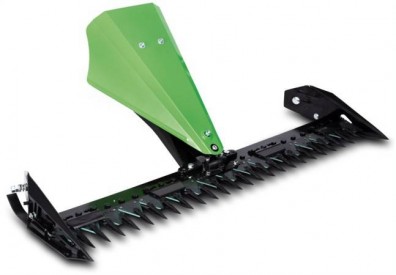 Click image for photo gallery
Click image for photo gallery
Description
Driven by the PTO, this attachment varies in widths. Attached to the front of the power unit, IE pushed, they consist of a series of blades mounted on a flat bar that runs horizontal on the ground. There are two types and both work like a barber clippers: Finger cutter bar, as the name suggests these have ‘fingers’ that stick forward to protect the blade. The finger bar is designed for regular cutting of grass for hay etc that is not all tangled at the bottom, if it is then they will block up. Fingerless cutter bar, with no fingers these are some times called ‘mulching bars’ and are excellent for cutting rougher growth. and can be used for cutting short grass or long grass for hay, wildflowers, weeds, thistles, bracken etc and will even cut woody material such as reeds and even small saplings, brambles are often tangled so they just remain in a tangled mass, just no longer attached to the roots!. They will leave the material you have cut in whatever length it stood, they do not chop up / mulch the material, and this can be an advantage if you wish to rake up or collect the cut material. The cutter bar is bolted to a transmission (dry on the smaller machines and oil bath on the larger and diesel models), which in turn is attached to the power unit. The transmission incorporates an oscillating coupling that allows the cutter bar to follow the contours of the ground. This type of mower effectively leaves the cut material the full width of the cutter, however some models can have deflectors mounted at either end to move cut material at either end of the cutter, towards the middle, these are called ‘swath boards’ as they put the cut material into a row which is referred to as a ‘swath’. A further attachment called a hay / grass rake (see later) can be used to put the cut material into a row. It is worth noting that a trailed seat attachment is available, this makes mowing of large areas far less tiresome!